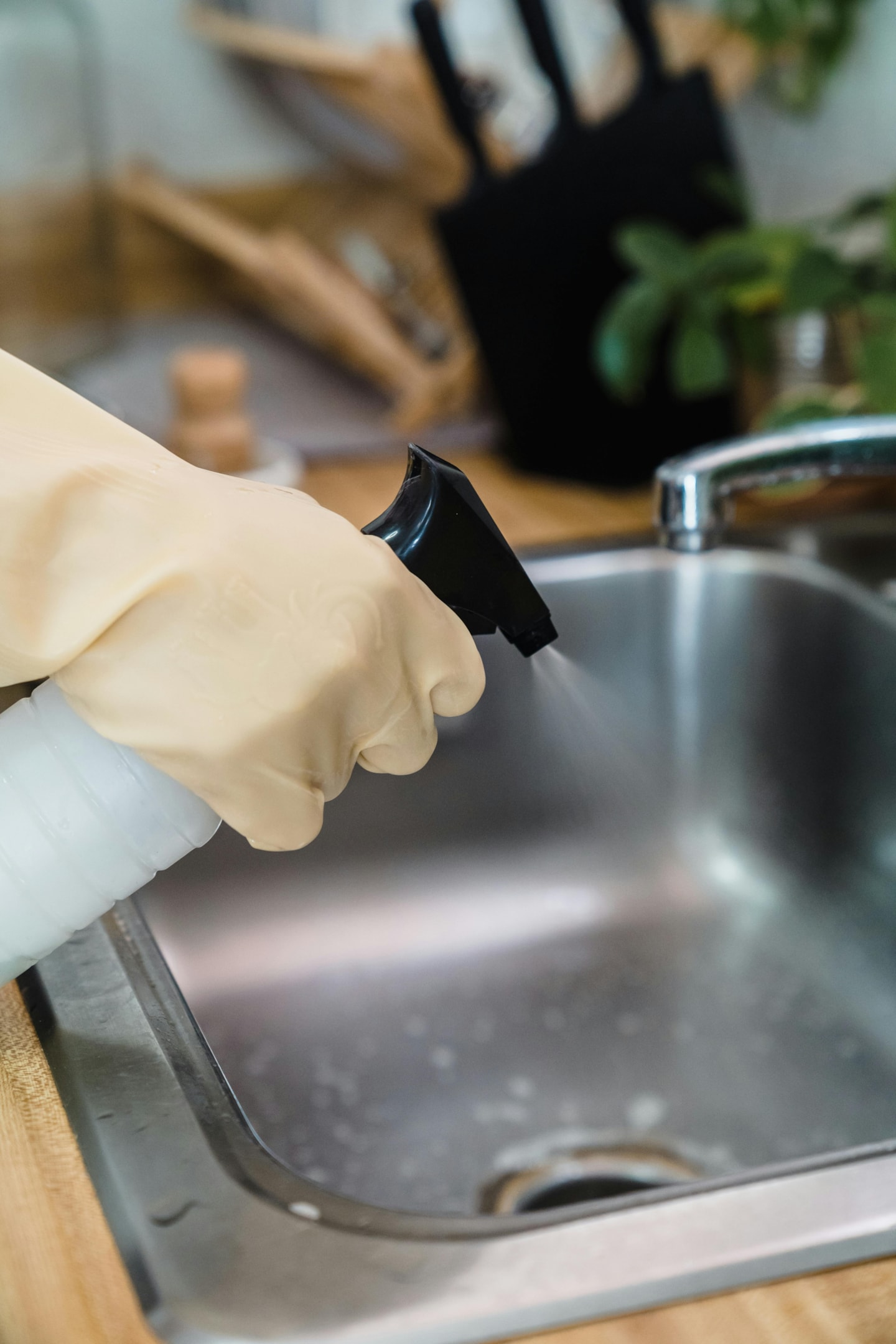Garbage disposal repair and installation are common plumbing repairs. At Advocate Master Plumbing, we’re happy to offer garbage disposal services to our friends and neighbors.
There are many different brands of garbage disposals and many different garbage disposal problems. We’ve dealt with them all and want to guide you through some of the questions we’re often asked about garbage disposal repair and installation.
Feel free to jump ahead to a particular subject.
- How does a garbage disposal work?
- What can you put down a garbage disposal?
- Why does my garbage disposal smell?
- Why is my garbage disposal leaking?
- Why does my garbage disposal just hum?
- Nothing happens when I turn on my garbage disposal.
- What kind of garbage disposal should I get?
How does a garbage disposal work?
Most people think a garbage disposal works like a blender. But it’s kind of the opposite of a blender.
Inside the garbage disposal, there is a spinning plate with lugs that throw the food against the sides of the disposer grinder chamber. The sides of the garbage disposal grinder chamber have fixed blades.
As the food is thrown over and over again against these blades by the spinning plate and lugs, it breaks down. Once the food waste is broken down into small enough pieces, it is washed through a small drain opening in the garbage disposal and down your kitchen drains.
What can you put down a garbage disposal?
This is a standard garbage disposal question. At Advocate Master Plumbing, we prefer to tell our customers that if it can go in the garbage, put it in the garbage.
Your disposer may not get clogged, but the drain pipes will eventually. A drain pipe is still just an empty pipe on a grade of about a quarter inch per foot. It can easily get clogged over time.
If you must use the disposal, use plenty of COLD water during each use. This prevents the motor overheating.

What you can put down a garbage disposal
This is a short list of the things you can put down a garbage disposal. Remember to run lots of cold water before, during, and after running the garbage disposal.
- Meat scraps
- Vegetable scraps
- Fruit scraps
- Food preparation waste
- Avoid putting too much in at a time and use cold water every time
What not to put in a garbage disposal
This is a list of items you shouldn’t put down the garbage disposal. If you’re stuck with an excess of liquid waste, you can always freeze it and throw it away on garbage day, or pour it into an old container.
- Grease
- Egg shells
- Coffee grounds
- Stringy vegetables
- Starchy foods
- Non-food items
Why does my garbage disposal smell?
If you eat and do not clean your teeth, your breath will be funky. Garbage disposals get morning breath, too. They get food stuck in their blades that need to be washed out.
And bacteria can grow inside the garbage disposal. So learn how to clean out a garbage disposal and then disinfect them.
A common way to clean a garbage disposal is run ice through it. This will dislodge the stuck food particles in your garbage disposals grinder chamber. Then drop half a lemon, peel and all, inside the garbage disposer and run it for about 10 seconds without water. Let it set overnight. The citric acid will break down the leftover particles and help kill the bacterial growth inside your garbage disposal.

Why is my garbage disposal leaking?
A leaking garbage disposal can be caused by a few things. Sometimes your garbage disposer collar is either incorrectly installed, or the seal under the garbage disposal collar flange needs to be resealed. A leaking garbage disposal can be due to the disposer vibrating loose from the mounting collar.
A leaking garbage disposal drain pipe is very common. The problem is usually caused by drain cleaner or a disposal jam that damages the bearing seal between the grinder chamber and the motor housing. Once the bearing seal has been compromised you’ll need to install a new garbage disposal.
Why does my garbage disposal just hum?
If your garbage disposal just hums when you turn it on, it could mean a couple of things. Either you have a jammed garbage disposal, or you have a seized garbage disposal motor. This is when it’s best to know how to repair a stuck garbage disposal. Otherwise, I would highly recommend you call your local plumber at Advocate Master Plumbing for a garbage disposal service.
Nothing happens when I turn on my garbage disposal
If you have a stuck garbage disposal, it will attempt to run until it overheats. This trips the disposal overload switch and stops the motor. You could also have a burned up motor.
Always check that the dedicated circuit breaker for the garbage disposer hasn’t tripped or that the electrical outlet is working. Then call Advocated Master Plumbing for professional garbage disposal service.
What kind of garbage disposal should I get?
Insinkerator garbage disposers are generally considered the brand of choice.
Consider the demand on the garbage disposer, as well as how long you’ll be living in your home. Is it worth upgrading to the pricier option?
Are your drains low enough for a larger disposal unit?
Can your drains handle the waste from a larger unit? Can your pocket-book?
Let your friends and neighbors at Advocate Master Plumbing advise you on the perfect garbage disposal for your needs.
DIY or hire a plumber for garbage disposal repair and replacement
There are many garbage disposal repair and installations that a homeowner can do themselves, but if you’re lacking in the DIY skills, proceed with caution. If you want to attempt a garbage disposal replacement or repair, PLEASE be cautious. And remember that the skilled local plumbers at Advocate Master Plumbing install and repair garbage disposals every day.
Your time is valuable. You’re good at your job. Let us be good at ours.

